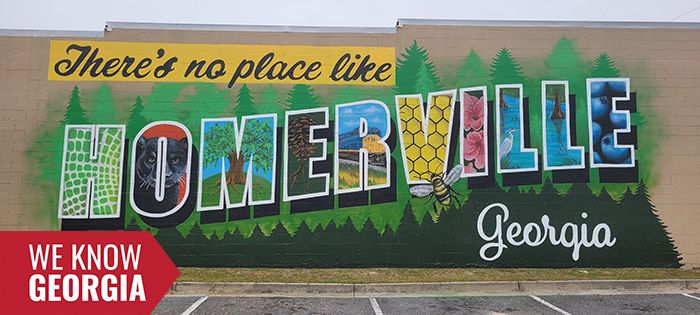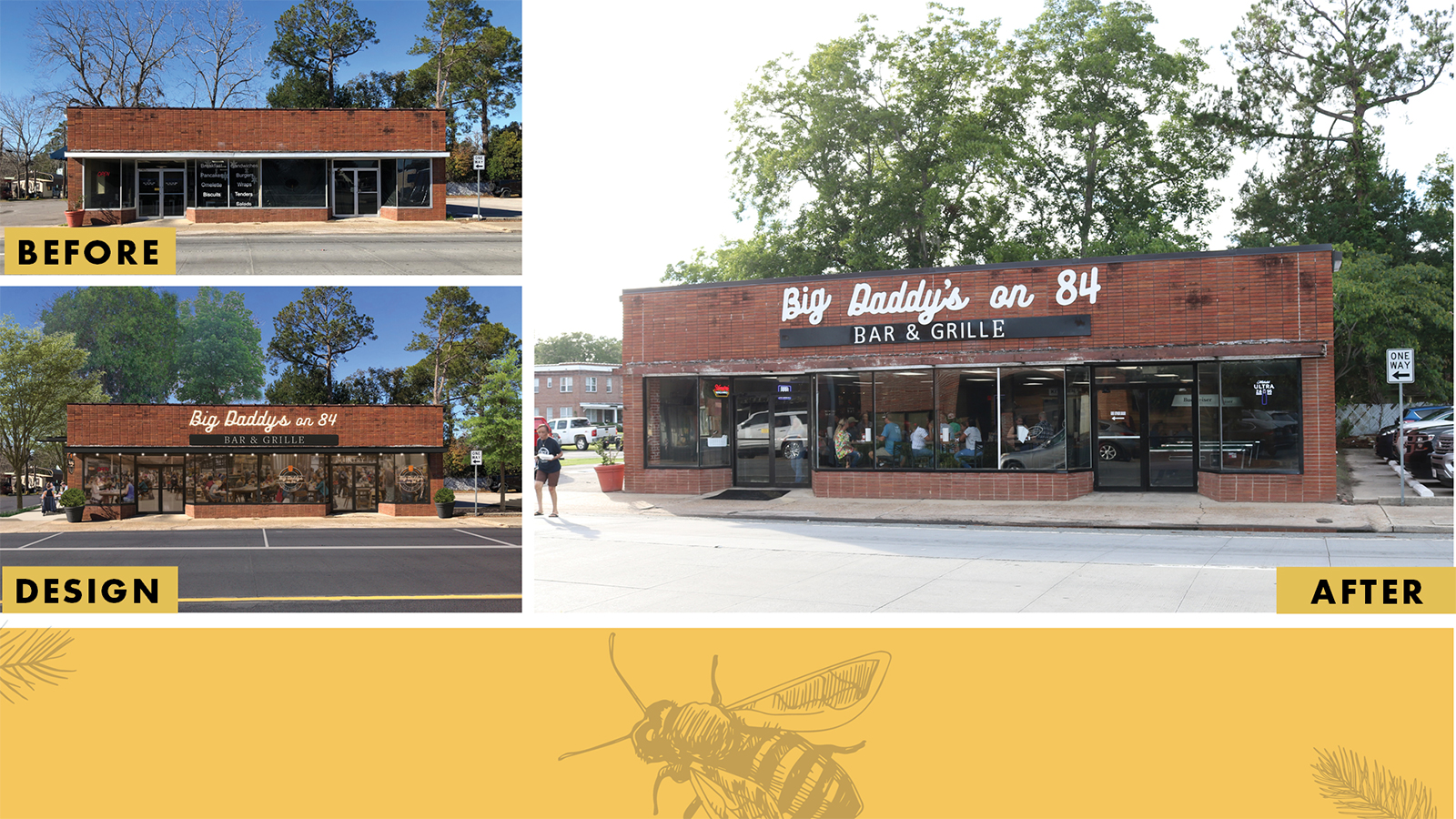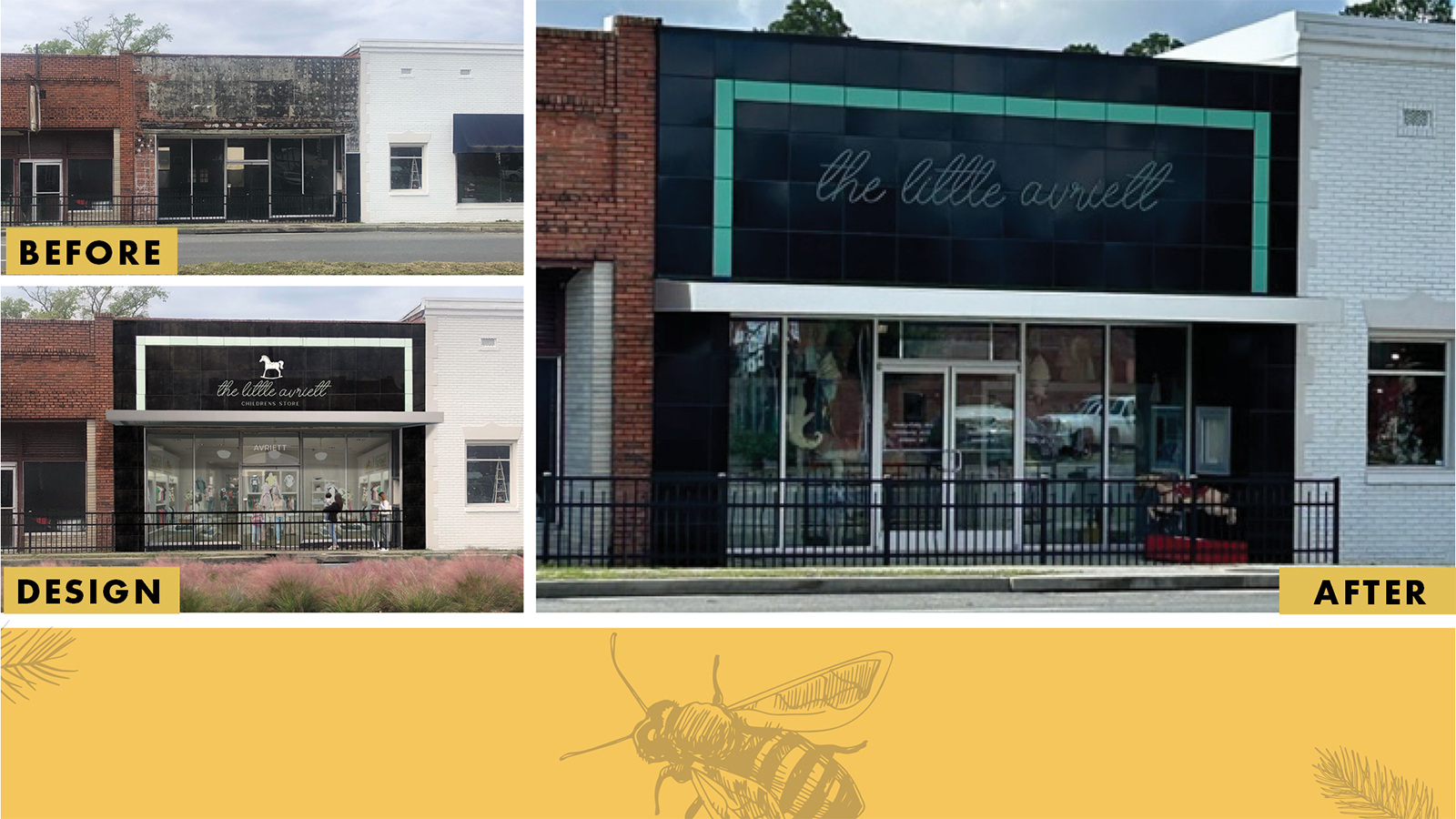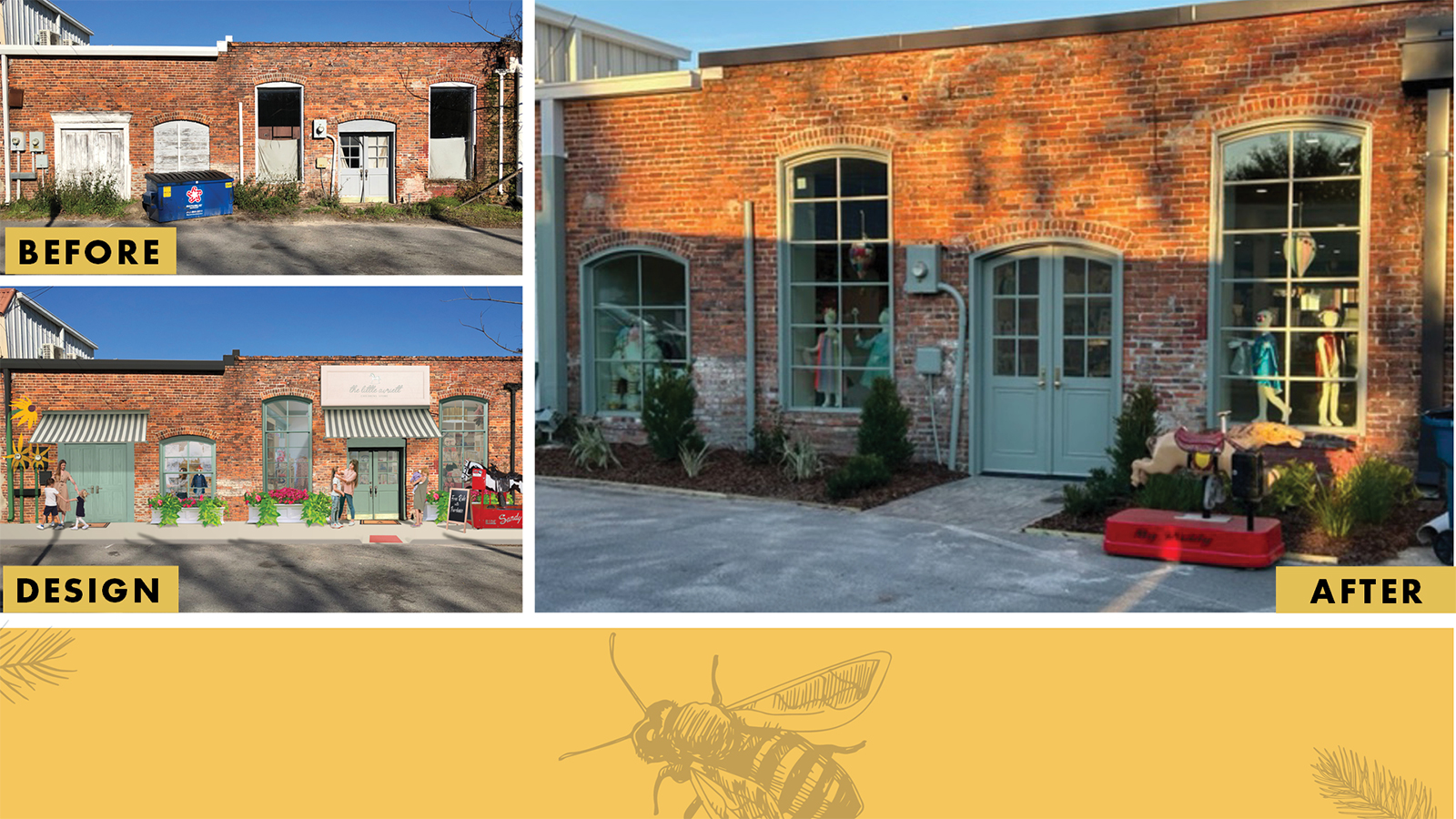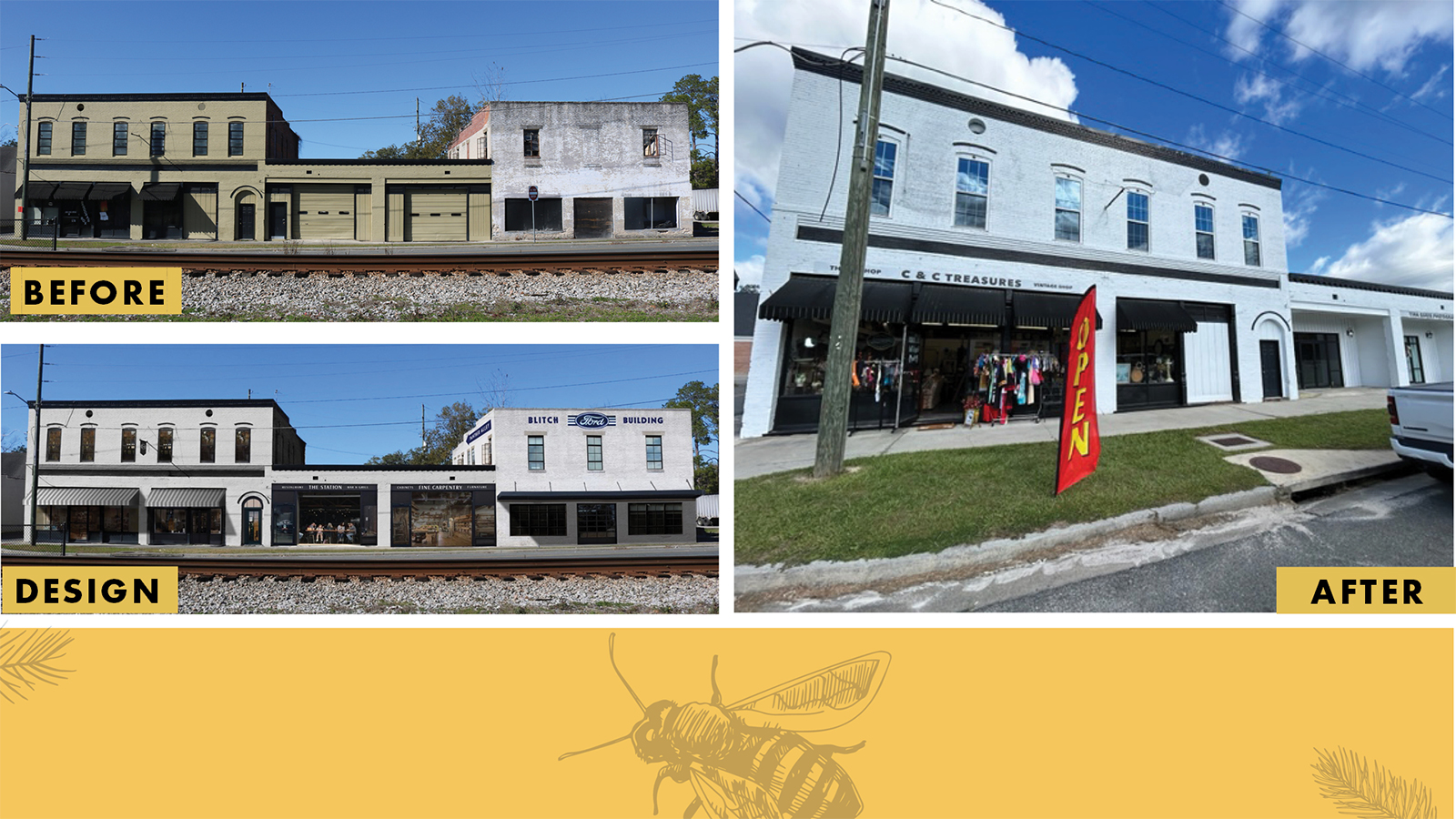Twenty years ago, Homerville lost an entire row of historic buildings to the widening of U.S. 441. In the ensuing years, businesses closed, buildings were abandoned, and heartbroken residents wondered what the future would hold for their small but close-knit community in southeastern Georgia.
Then, in 2021, long-time resident and Homerville Main Street Manager Laura Nipper reached out to the University of Georgia Carl Vinson Institute of Government. She sought help in breathing new life into the town of nearly 2,400 just west of the Okefenokee Swamp.
The Institute of Government has worked with towns like Homerville for the past decade through the Renaissance Strategic Visioning and Planning (RSVP) Process. RSVP has helped over 20 communities across Georgia re-envision their downtowns, invigorate citizen involvement and jump-start economic development. The program is a partnership between the Institute of Government, the Georgia Municipal Association and the Georgia Cities Foundation.
When Nipper found out about the RSVP program, she knew it was exactly what Homerville needed. Through its partnership with UGA and the work in RSVP, the city’s downtown value has increased by $2 million, according to Nipper.
“The story of Homerville and its success is one of a community that heard the needs of its people and decided to reinvest in their downtown,” said Danny Bivins, UGA faculty lead for the RSVP program.
Nipper praised the Institute of Government and its partners. The Georgia Municipal Association provided a $9,500 seed grant to support the Homerville RSVP process.
“From the beginning, they were so incredibly wonderful to work with, very mindful of the small details that were important to the town and ready to take on a challenge,” she said.
After working closely with Institute of Government experts, the community identified two major goals for downtown Homerville: Improving the appearance and condition of streets, buildings and public spaces, and expanding activities and events.
“I’d like the younger generation to have something to do, like when the old downtown shops were open and kids would flock there after school,” said one Homerville resident in a community survey.
Nipper said many residents echoed this sentiment.
“Our folks were just waiting for change, and as soon as they started seeing new work being done downtown they were more than ready to jump in and get their hands dirty,” she said.
Homerville residents were so excited about UGA’s revitalization plan they invested their own money in the project. Generous donations from local industry funded Homerville’s RSVP master plan, but the community didn’t stop there. Many retired educators were so enthused by the Institute of Government’s work that they began completing projects even before the master plan was finished.
“Homerville could be used as a model of how to leverage community support. It comes from really important groups in that town like the Retired Teachers Association. They had such a major impact on the success of this project,” said Clark Stancil, creative design specialist at the Institute of Government.
During the process of creating the RSVP master plan, one retired Homerville teacher bought a city block of vacant buildings and began transforming them into usable commercial and community spaces. The block will include Panther Alley, a community gathering place inspired by Clinch County High School athletics. Clinch County plans to replace its existing high school with an updated building over the next two years. The school has agreed to donate some of the old, yellowing bricks from the building to pave Panther Ally.
In addition to streetscaping and proposed renovations, the RSVP recommended murals designed specifically for Homerville and its residents. Inspired by the Okefenokee Swamp and local agriculture, Stancil and Kaitlin Messich, institute faculty, presented designs for both wall and asphalt murals that have since been completed.
Such renovations are likely just the beginning for Homerville. A candy store, a hotel with an antique shop in the lobby, a Mexican restaurant and a second-hand furniture store are in the works, according to Bivins.
The institute credits an active community for a productive project, and community leaders return the credit.
“They made this difficult process a phenomenal experience for the whole community,” Nipper said of UGA faculty. “They held our hands every step of the way and brought vitality back to our small town. They are no longer friends of Homerville; they are our family.”
